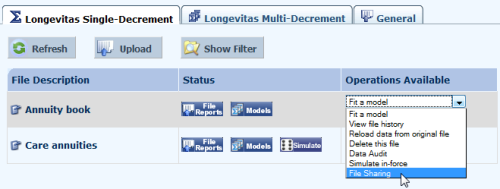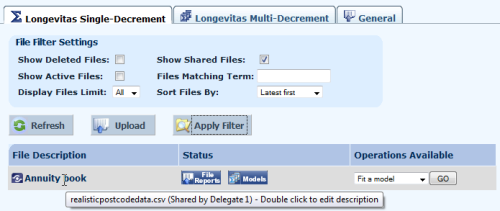A problem shared
Creating a good model from your experience data is not always straightforward. Data gathered over an extended time period, as financial portfolios usually are, will often incorporate artefacts from more than one administration system or servicing team, and it may require wide-ranging business experience to make the best analytical choices.
Perhaps for this reason, our clients often collaborate on modelling projects between offices and sometimes with external partners. At present, we know of one project involving analysts in both Canada and Bermuda, and another where the team spans no fewer than three organisations - two in France, and one in the UK. A server based approach makes such collaboration easier, whilst also centralising audit and bringing performance advantages. In contrast, local desktop installations have limitations in all these areas.
Desktop based analysis may require team members to juggle their own copies of the data, their own set of models and results, and their own configuration. Has everyone uploaded the data in the same format? Have they applied the same validation and deduplication rules? Are they using the same model types and optimisation specifications? It isn't impossible of course, but you'll need to work tirelessly to ensure results remain comparable, and that's effort better spent on improving your models.
Collaborative features in a statistical modelling system might easily be overlooked, so we'll highlight them briefly here. The principles are:
- Sensitive data uploaded into our systems is securely encrypted
- Having prepared, validated and deduplicated data as required a user then shares it with their chosen team members.
- The data remains encrypted - the software tracks the keys required to keep everything secure.
In practice, this is as simple as:



Your colleagues can't delete a file you have shared with them, but they can run models and operations against the data that will be fully accessible to everyone in the sharing group. The file owner can of course, take back or unshare data at any time, and there will always be an audit trail of who did what and when.
Simple.


Add new comment